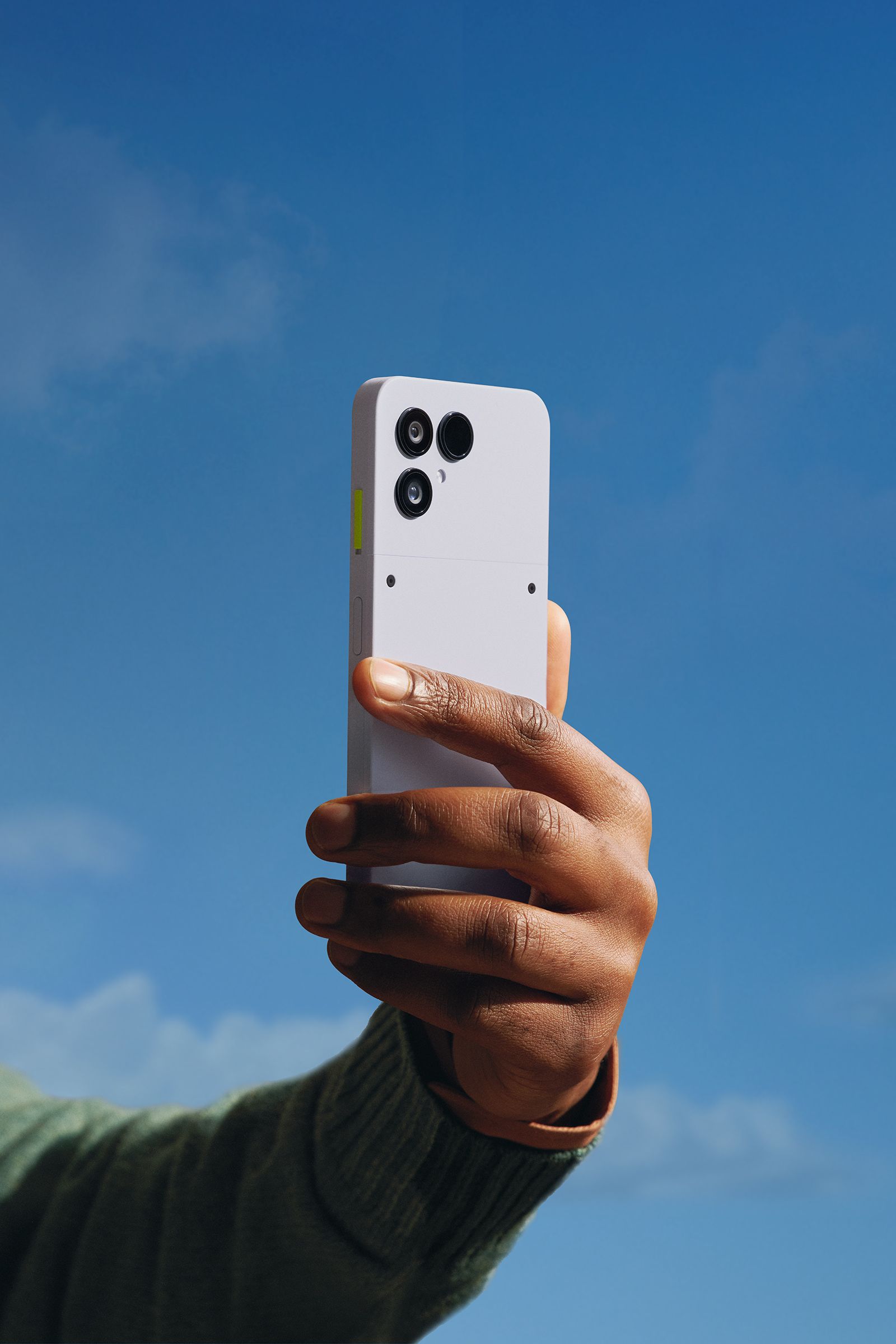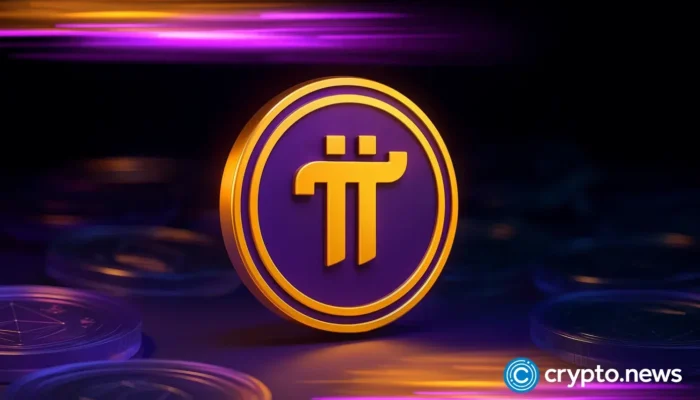Fairphone has released a new phone, the Fairphone 6. The series began in 2013, and there’s still nothing else quite like it, anywhere. These mobile phones are what almost all other tech is not: ethically admirable.
Fairphone strives for more sustainably sourced raw materials, for better pay and better conditions for factory workers. And on your side as the end user, the phones are modular, easily repairable. Fairphone promises its new phone will get eight years of software updates, including an eyebrow-raising seven major Android system upgrades.
The Fairphone 6 has 12 modular elements you can replace, from the battery and display to the speakers, camera, and USB port. Indeed, you can still buy replacement cameras and screens for the Fairphone 2, which was released in pre-Trump, pre-Brexit 2015. And Fairphones remain the only smartphones—ever—to be rated 10/10 for repairability by iFixit. Every model since the Fairphone 2 has achieved that score.
Sounds great, right? But there’s a big problem. It looks like hardly anyone gives a damn.
People Don’t Care Enough
Fairphone is stuck in a rut. We know this because Fairphone is not just a pioneer of smartphones you don’t feel dirty just for owning. It’s unusually transparent, too. Its own reports tell us Fairphone sales have flatlined at around 100,000 a year.
Put 100,000 phones in a room and it will seem like a heck of a lot. But, for context, Apple is estimated to have sold 37 million iPhone 16s in the series’ first weekend, before the phones were even out.
Does no one really care about sustainable tech? The answer from one analyst we talked to is kinda, yeah. “There’s really no one else who does anything kind of close to what Fairphone does from a sustainability point of view. The issue I have with Fairphone is that it’s quite niche,” says Jan Stryjak, Counterpoint’s European and Sustainability research lead.
“It’s still not the kind of primary driver for people when it comes to buying a phone. The number one is still very much price and brand, particularly in Europe.”
Fairphone isn’t a household name. And while the Fairphone 6 is actually cheaper than the Fairphone 5 was at launch in 2023, at £499/€599, it has masses of price competition from companies where any ethics angle can seem, at most, little more than a marketing tick box. For less cash, you could buy a more powerful and excellent Pixel 9a, for example.
The company made a concerted effort to get out of this rut in 2023, investing big in marketing and expansion. It led to a €20 million loss for that year, followed by the departure of CEO Eva Gouwens, and 2024 sales just a smidgen over 100,000, yet again.
And Fairphone’s much bigger rivals are going to be forced to apply at least a pinch of Fairphone-style seasoning to their phones going forward, thanks to the EU’s Ecodesign Directive. This came into force on June 20. It demands five-year software support and applies stronger rules on repairability.
“I can’t see any significant growth over the next few years,” says Stryjak. “Other companies have caught up a little bit in terms of making things more durable and sustainable and repairable, and with consumers a key driver is still pricing and brand. Fairphone will have its loyal fan base, but I can’t see that significantly expanding anytime soon.”
“Nobody Wants to Pull on a Dead Horse”
We put to Fairphone the idea it may have to make do pootling along with this same niche audience. “I will say it’s nonsense, right?” Fairphone CEO Raymond van Eck told WIRED.
“I would never have started at a company … if we feel there is no potential. Nobody wants to, as we say in Dutch, pull on a dead horse to see if it’s going to walk.” Fairphone is based in Amsterdam, and van Eck was appointed CEO in August 2024.
“In the next five years, we really have the intention to quadruple our addressable market and to take our fair share of that,” says van Eck. The company has also set a goal of “double digit growth” just for this year. The obvious question: how?
Part of Fairphone’s strategy is of course seen in the Fairphone 6 itself. It has some neat ideas such as a slider that puts the phone into an Essentials mode. This pares back the interface to help you get away from the distractions of, for example, social media.
There’s a breezy lifestyle angle here Fairphones have arguably not had before. And fostering that was a part of the rebrand the company kicked off at the beginning of 2025, which included binning the stiff-looking, all-caps company logo of old for something a bit more friendly.
The Fairphone Fix
Van Eck says it’s about “changing the order” of priorities, of putting the device itself at pole position rather than the ethics it represents. “In the end, it also is clarifying Fairphone’s vision, because the rebrand gave us a more friendly, more approachable identity,” he says. “It’s a bit less paternalistic.”
The message is that Fairphone isn’t just a phone for eco warriors. And chief technology officer Chandler Elizabeth Hatton suggests that image, that classic Fairphone message, may have actually proved off-putting for some.
“When we are marketing the device, we don’t lead with that. Not in our advertising campaigns, not in our communication, and also not the way that I would like to convey it to you,” says Hatton. “It can become preachy in some markets. That message is resonating less right now. There are people that are in panic but also completely exhausted by the climate crisis or questions of ethics.”
So … is it time to de-woke Fairphone? That seems too blunt an interpretation, because there’s no indication that Fairphone plans to dilute its standards. It’s just not going to harp on about them quite as overtly.
Turning Down the Volume
“Fairphone was founded 12 years ago, basically to tackle the social and environmental issues embedded in the electronics industry,” says Van Eck. “What we also saw is that Fairphone was quite situated around telling that story … which meant that the Fairphone was for a lesser addressable market.”
This new approach also involves not having too bold a take on things like AI, which owing to its environmental impact could be seen as antithetical to one part of the old Fairphone message.
“I don’t think it is pragmatic, if you start more revolutionary thinking saying, ‘OK, we’re totally against it, and we’re going to do nothing with it,’” says Ven Eck. AI is “part of our industry, right? It’s part of the everyday use of customers. So it will be almost naive to say we’re not going to do anything with it. It’s part of everyday life.”
The Fairphone 6 doesn’t have its own AI assistant, but does feature Google’s Gemini AI.
Turning down the volume on the environmental and ethical messaging might be compared to how some vegetarian food brands now consider people cutting down on meat, or meat-eaters looking for a healthy choice, as important a part of their audience.
CTO Hatten would rather you tell a friend to think of the Fairphone 6 as “the last phone that they’ll have to buy for a while” rather than dwell on the ethics of the mining operations used to harvest the cobalt for its battery.
But there’s a big problem here, too. In 1924, the American automobile market began reaching saturation point. To maintain sales, General Motors executive Alfred P. Sloan Jr. suggested annual model-year design changes to cajole car owners into buying replacements each year. This strategy came to be referred to as planned obsolescence.
In an ideal world, Fairphone wants their phones to be “the last phone that you’ll have to buy”—and they’ll try their darnedest to make sure you’ve the software and spare parts to make this happen. There’s no planned obsolescence here. None at all.
Now, that’s laudable, but this also means that, once Fairphone has tapped that global market of the relatively tiny number of phone users who really care about our planet above the wonders of Apple’s Dynamic Island, very few will need to rebuy or upgrade on their initial ethical purchase. Not for many, many years, anyway. How can you significantly grow a business like that?
Will Fairphone’s new strategy of diversifying its offering with the 6’s breezy lifestyle angle work? Thanks to the company’s wonderful transparency we can all find out once Fairphone drops its 2025 Impact Report some time in early 2026.



